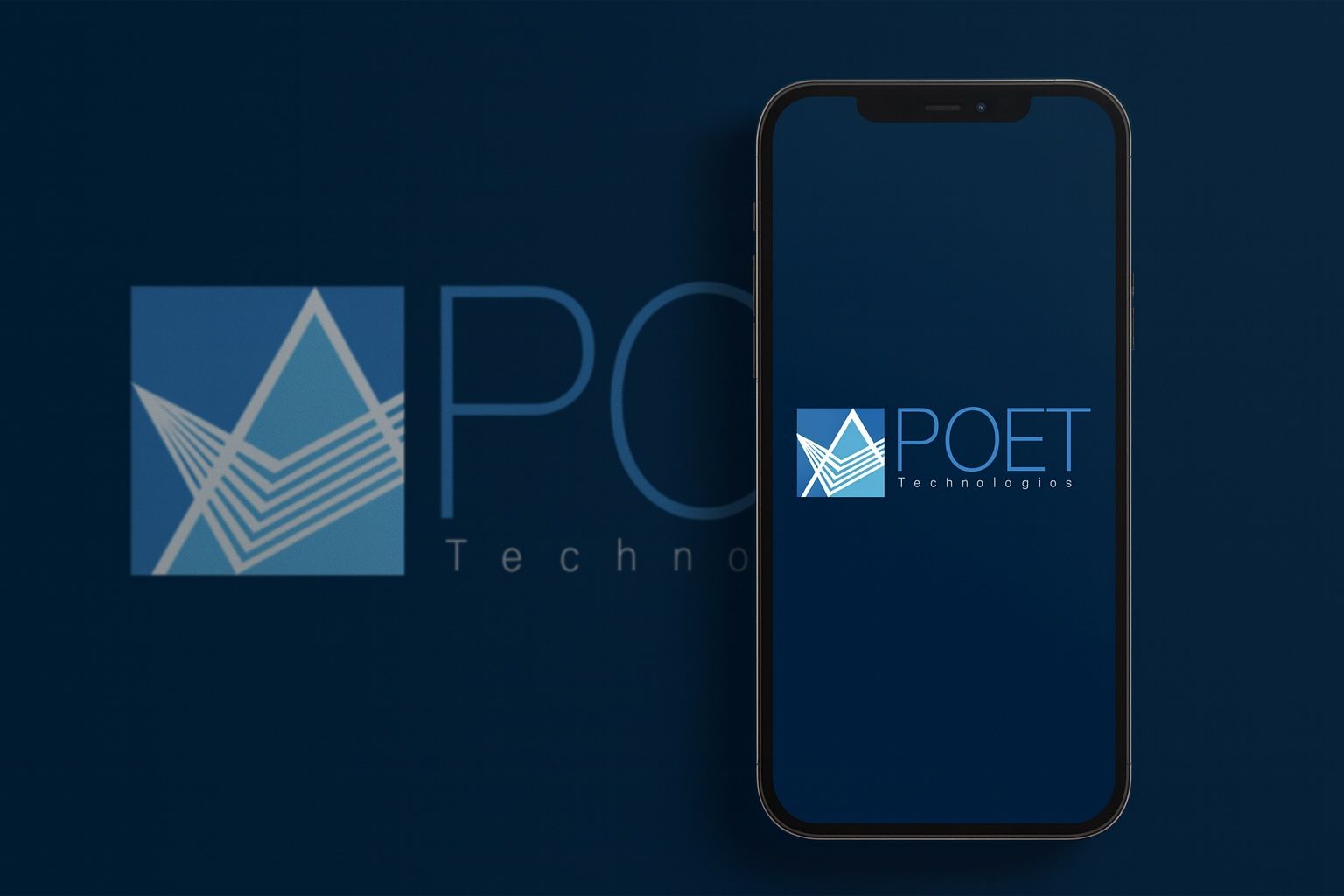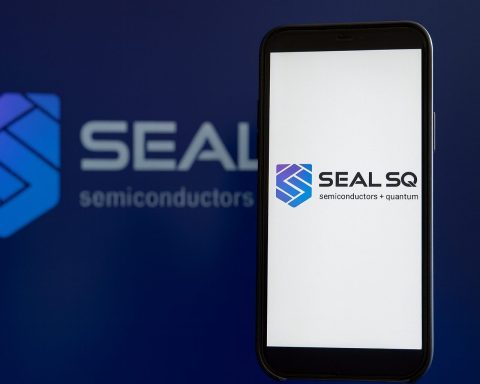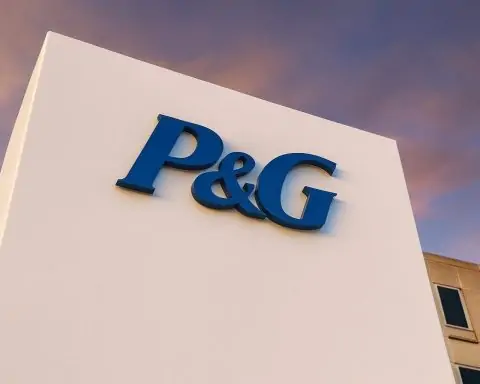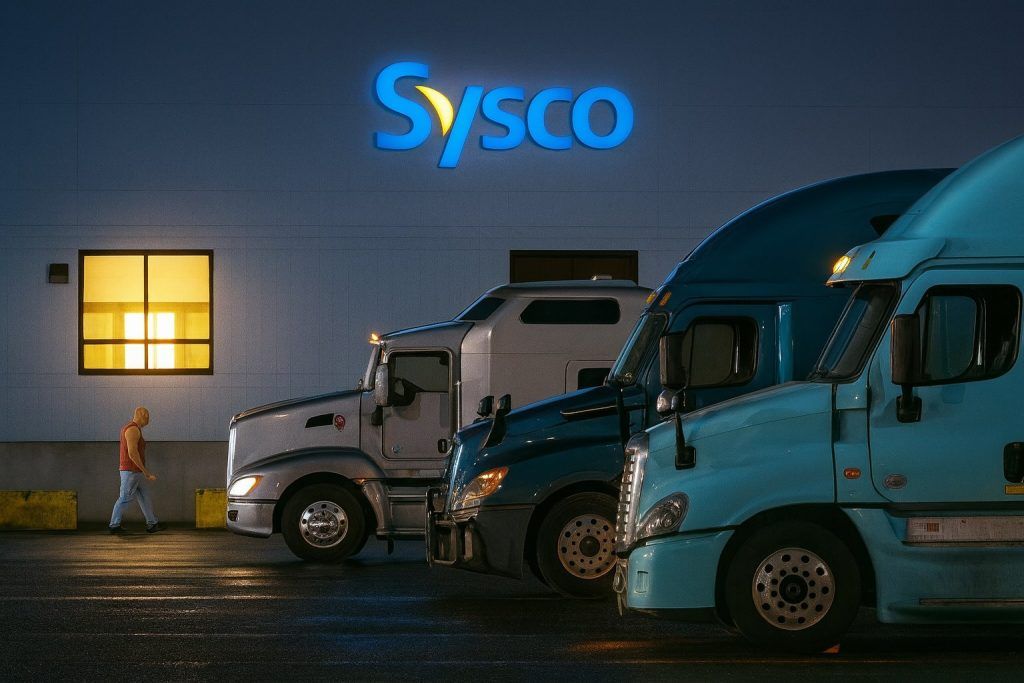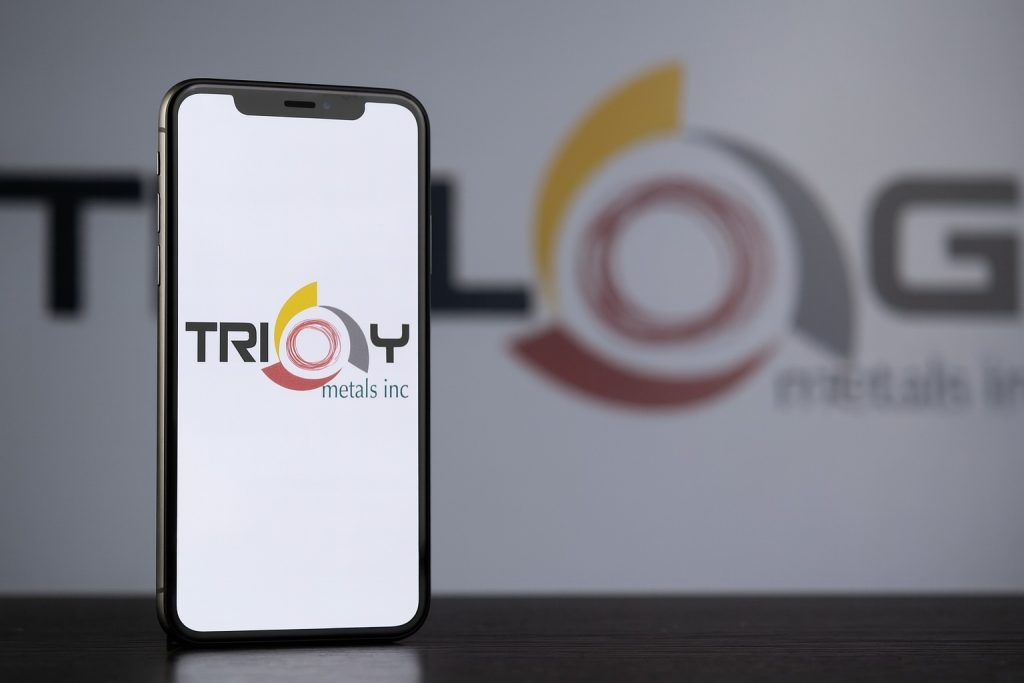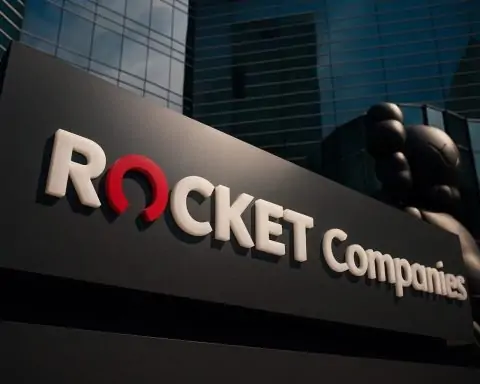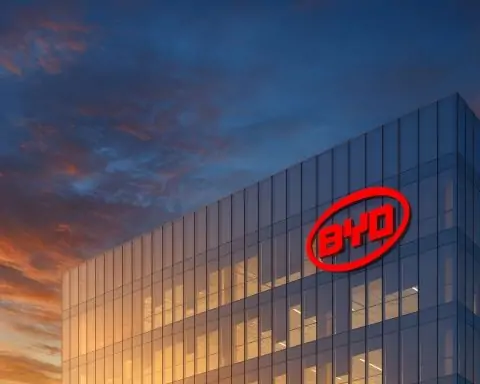- Record Investment: POET Technologies secured a US$75 million private investment on October 7, 2025 – the largest in its history – from a single institutional backer [1]. The funding will fuel corporate development, including acquisitions, ramped-up R&D, and expansion of its AI connectivity solutions [2].
- Optical Chip Innovation: POET specializes in high-speed optical engines and light sources for AI systems and data centers, built on its patented Optical Interposer platform that integrates electronic and photonic devices on one chip [3]. This photonic integration promises lower cost, lower power, and ultra-fast data links, tackling AI’s data bottlenecks in ways traditional copper cannot [4] [5].
- Strategic Momentum: The company is leveraging the AI infrastructure boom with new products and partnerships. In late September, POET and Semtech launched 1.6-terabit optical receiver engines (DR8 and 2×FR4 modules) for AI and cloud networks [6]. POET also won the “Most Innovative Chip-Scale Optical Product” award at ECOC 2025 for its 200G/lane optical engines and 1.6T Teralight™ platform [7] [8] – its seventh industry award in 15 months.
- AI Connectivity Gold Rush: Experts say demand for next-gen connectivity is surging. “We estimate that the AI optical connectivity opportunity has created over $50 Billion in market value to date,” noted Northland Capital analyst Tim Savageaux, who pegs the emerging external light source (ELS) segment at a $1 B+ annualmarket [9]. POET’s recent tie-up with Sivers Semiconductors targets exactly that, combining Sivers’ high-power lasers with POET’s interposer to develop co-packaged optics for AI data centers – with prototypes expected in 2026 [10] [11].
- Market Reaction & Outlook: Traders greeted the $75 M infusion with optimism – call option volume spiked 18× above normal on Oct 7, as investors snapped up bullish $10 strike calls expiring in 2026–27 (put/call ratio hit a low 0.01) [12]. Yet financials temper enthusiasm: POET is pre-revenue with steep losses (net profit margin ~–11,500% [13]), and its stock carries a sky-high ~1457 price-to-sales ratio [14]. The lone recent analyst rating is merely “Hold” with a $6.50 target [15], reflecting caution until POET proves it can convert its technological promise into revenues.
POET’s $75 Million Bet to Scale AI Connectivity
POET Technologies – a Toronto-based designer of photonic chips – has landed a $75 million cash infusion to supercharge its growth in the AI hardware arena [16]. Announced on October 7, the deal was a non-brokered private placement (13.64 million new shares plus warrants) with a single institutional investor, underscoring a strong vote of confidence in POET’s technology [17] [18]. The investment “marks the largest single investment in POET’s history” and boosts the company’s balance sheet to over $150 M in cash with no significant debt, according to CEO Dr. Suresh Venkatesan [19] [20].
“The massive growth of AI infrastructure represents an unprecedented opportunity for which POET is well-prepared,” said Venkatesan, noting the firm now has “a war chest” to scale up its ambitions [21]. With the funds, POET plans to “secure our technological lead and revenue generating opportunities in light sources for chip-to-chip connectivity, ultra high-speed transceivers and related applications”, he added [22]. In practical terms, management intends to deploy the $75 M toward targeted acquisitions, aggressive R&D expansion, and scaling up manufacturing – especially for products serving the AI connectivity market [23]. This expansion drive aims to position POET at the heart of the AI data center boom by providing the critical photonic links that keep ever-larger AI models fed with data.
Notably, the investor obtained warrants exercisable at C$9.78 (through 2030) [24] – pricing that implies confidence that POET’s share price could roughly double in coming years (the stock was around $5–6 pre-investment). The identity of the investor wasn’t disclosed in the announcement, sparking some market chatter about a potential strategic partnership or industry player involvement [25]. Regardless, the cash injection solidifies POET’s finances to pursue growth “without the overhang of debt or near-term funding needs,” as one industry observer noted.
Photonic Chips to Tackle AI’s Bandwidth Bottleneck
POET’s appeal lies in its unique approach to a pressing bottleneck in AI computing: moving massive volumes of data between chips and servers efficiently. As AI models and datasets explode in size, traditional copper interconnects inside data centers struggle with bandwidth and power limitations [26]. This has made optical interconnects – which use light to carry data – a critical technology to scale AI infrastructure. Fibre optics have long proven superior for eliminating data center bottlenecks [27], and now that advantage is moving onto the chips themselves.
This is POET’s specialty. The company’s Optical Interposer™ is a patented silicon photonics platform that seamlessly integrates photonic devices (like lasers, modulators) and electronic circuits on one chip [28] [29]. In effect, POET can create “optical engines” – tiny modules that send and receive data as light – with unprecedented integration and cost-efficiency. According to POET, its interposer-based products are smaller, cheaper, and more power-efficient than traditional designs, and are easily scaled to high-volume production via standard semiconductor fabrication [30] [31].
Crucially, POET is targeting the most demanding links in next-gen computing: the 800G to 1.6T (terabit-per-second) class optical connections needed in AI superclusters and hyperscale cloud data centers [32]. For example, POET has developed novel light source products for chip-to-chip communication within and between AI servers [33] – essentially optical links that could replace short-reach copper inside AI training racks, slashing latency and power draw. This is “the next frontier for solving bandwidth and latency problems in AI systems,” the company explains [34]. By embedding high-speed optics at the chip level, AI clusters can dramatically increase throughput between GPUs/TPUs, preventing data bottlenecks that slow down training of large models.
Industry experts agree optical networking is key to sustaining the AI boom. Even established suppliers are racing to upgrade connectivity – for instance, Applied Optoelectronics recently demonstrated a cutting-edge 800 Gbps optical transceiver and highlighted that it enables hyperscale customers to “future‑proof their optical infrastructure” by cutting power usage and cost-per-bit [35]. The 800G/1.6T era is arriving much faster than previous generations, as AI workloads push the limits of conventional networking. This broader context makes POET’s technology timely: a convergence of photonics and AI where huge market value is at stake. As Northland Capital’s Tim Savageaux observes, AI-driven demand for optical connectivity has already created tens of billions in market value – and new technologies like external laser modules (which POET is pursuing) could add “$1B+” per year on top of that [36].
New Products, Partnerships & Industry Recognition
POET is not just raising money – it’s been rapidly rolling out innovations and forging alliances to seize the moment in AI connectivity:
- 1.6 Terabit Optical Engines with Semtech: On September 30, POET and Semtech Corp announced a jointly-developed 1.6 T receiver module now available for customer sampling [37]. These receiver optical engines integrate Semtech’s 200G-per-lane FiberEdge receiver chips with POET’s interposer in a single package [38]. The result is a highly integrated module supporting either 8×200G (1.6T) short-reach DR8links for AI clusters or 2×FR4 long-reach links for standard data centers [39]. Key advantages touted include lower power consumption, higher sensitivity, reduced BOM (bill of materials), and improved signal integrity at 200G/lane [40]. In plain terms, the module can receive data at 1.6 terabits per second with superior efficiency – a crucial capability for next-gen AI network fabric. This partnership leverages Semtech’s optical IC expertise and POET’s packaging, illustrating how POET can collaborate with established players to bring products to market quickly.
- “Most Innovative” Award at ECOC 2025: POET’s technology caught the spotlight at the prestigious European Conference on Optical Communication (ECOC) in late September. The company won “Most Innovative Chip-Scale Packaging/Optical Sub-Assembly Product” at the 2025 ECOC Exhibition in Copenhagen [41]. The award recognized POET’s Optical Interposer platform and its 200G/lane optical engines, which impressed industry judges for their integration and performance. POET’s new Teralight™ 1.6T engine was featured in a Product Focus session at ECOC, underlining the company’s growing influence in optical comms [42] [43]. Notably, this is POET’s 7th award in 15 months for its AI and datacom solutions [44] – a streak that signals consistent innovation. Such recognition from independent experts boosts POET’s credibility as a cutting-edge player in a field traditionally led by larger firms.
- Co-Packaged Optics Collaboration with Sivers: In another strategic move, POET announced a collaboration with Sivers Semiconductors (Sweden) to co-develop External Light Source (ELS) modules for co-packaged optics in AI and telecom applications [45]. This partnership, unveiled September 29, combines Sivers’ high-power DFB laser technology with POET’s interposer platform to create laser source modules that can be integrated next to switch chips (co-packaged) in future data center hardware [46] [47]. The goal is to address critical challenges in scaling AI clusters – providing powerful, efficient light sources for optical links that can be mass-produced at wafer level [48]. An independent market analysis by Northland Capital cited in the announcement estimates the emerging ELS market could exceed $1 B/year, as big cloud operators adopt co-packaged optics, which is part of a broader $50 B+ AI optical connectivity market today [49]. The POET-Sivers team expects to demo early prototypes in the first half of 2026 and target production by end of 2026 [50] [51] – timelines that align with when many experts predict co-packaged optics will start being deployed in data centers. If successful, this could position POET as a supplier of essential laser modules to server and switch makers.
These milestones illustrate how POET is aggressively positioning itself across the optical interconnect value chain – from transceivers (with Semtech) to light sources (with Sivers) – while garnering industry validation (ECOC award). The flurry of activity around late September 2025 was no coincidence: it coincided with major photonics conferences (ECOC in Europe, CIOE in China) where companies often unveil breakthroughs. POET’s busy week of announcements suggests a coordinated push to showcase its tech to both customers and investors, reinforcing why the $75 M investment arrived at an opportune time.
Stock Surge, Speculation & Future Prospects
News of the $75 million deal and POET’s advances in AI photonics has injected fresh excitement into its stock – but also a dose of scrutiny. POET’s Nasdaq-listed shares (ticker: POET) jumped in early October as retail traders and possibly quant funds reacted to the developments. One clear signal of bullish sentiment came from the options market: on Oct 7, over 73,000 call options traded on POET (≈18 times the normal volume), focused on January 2026 and 2027 $10 strike calls [52]. Such out-of-the-money calls imply bets that POET’s stock (recently ~$5–6) could roughly double or more in the next 1–2 years. The put/call ratio plunged to 0.01, indicating almost all speculative activity was on the upside [53]. This kind of trading surge often follows a catalytic event like the $75M infusion, as traders anticipate that new funding and business momentum could drive the company’s valuation higher.
At the same time, analysts and financial experts urge caution. TipRanks reports that the consensus rating on POET is Hold, with a lone analyst price target of $6.50 [54] – essentially where the stock was before the deal. In other words, Wall Street is in “wait-and-see” mode. POET’s fundamentals help explain the hesitation. The company is still in R&D mode, with minimal revenue and ongoing losses. GuruFocus data highlight that POET’s 3-year revenue growth is –45% and its operating margin about –6026% (!), reflecting the fact that it spends heavily relative to a very small sales base [55]. The net margin of –11521% underscores that POET has yet to turn any profit [56]. While such figures are common for pre-commercial tech firms, they underline the execution risk: POET must scale production and win customers to justify investors’ optimism.
Valuation metrics also appear stretched based on today’s numbers. Prior to the investment, POET’s market cap hovered around $580–660 M [57] [58], and with tiny revenue, its price-to-sales ratio was a startling ~1457(versus single or double-digits for most semiconductor firms) [59]. This suggests the stock’s value is almost entirely based on future expectations in the AI photonics space. “Unattractive valuation” and “significant losses and negative profitability” were flagged by TipRanks’ AI analyst as drags on POET’s stock score [60].
However, POET’s balance sheet is now a source of strength. The new $75 M means the company should have over $150 M cash on hand [61] – a sizable runway to fund development for the next couple of years. Its debt is negligible (debt-to-equity ~0.15) [62], and current ratio ~1.9 indicates decent liquidity [63]. In other words, POET can focus on executing its roadmap (products, partnerships, client wins) without the specter of near-term cash crunches. This financial stability is critical in an industry where long sales cycles and qualification periods are the norm for new technology.
Looking ahead, the big question is whether POET can convert its technological head start into commercial traction before competitors catch up. The field of AI optical connectivity is heating up: startups and giants alike are developing silicon photonics, optical I/O chips (e.g. Ayar Labs’ microLED optical engines [64]), and co-packaged optics solutions. Cloud titans (e.g. Microsoft, Google) are also investing in bespoke networking tech to link AI supercomputers [65]. POET will need to demonstrate that its Optical Interposer approach is not only innovative, but also reliable and cost-effective at scale for major customers. The planned prototypes and product sampling in 2024–2025 will be key milestones. Any design wins or pilot deployments with large data center or telecom players would be strong validation.
On the flip side, further partnerships or strategic investors could accelerate POET’s path. The mystery $75 M investor has led to speculation: if it’s a strategic partner (for example, a big tech company or an industry supplier), it might pave the way for collaborations or guaranteed orders. POET’s investor relations will likely face pressure to reveal more details if possible, or at least to show progress on how the funds are being used (e.g. if an acquisition is in the works, as hinted).
For now, POET Technologies stands as a bold contender aiming to solve one of AI’s most critical hardware challenges. It has money in the bank, multiple irons in the fire, and growing recognition in the optics community. “We will continue to drive innovation, expand operations, and pursue revenue in key target markets, bringing long-term value to shareholders,” CEO Venkatesan pledged after securing the funding [66]. The coming 12–18 months will reveal how well POET can fulfill that promise. If the AI boom of 2024–2025 truly heralds an “optical revolution” in computing, POET Technologies now has a fighting chance to be one of its leading lights – with $75 million worth of fuel to get there.
Sources: POET Technologies Press Release [67] [68]; TipRanks News [69] [70]; GuruFocus analysis [71] [72]; StockTitan/GlobeNewswire [73] [74]; ts2.tech (Tech Space 2.0) [75]; POET–Semtech announcement [76] [77]; POET–Sivers announcement [78] [79]; TheFly/TipRanks market report [80]; ECOC 2025 award news [81] [82].
References
1. www.tipranks.com, 2. www.tipranks.com, 3. www.tipranks.com, 4. www.stocktitan.net, 5. www.stocktitan.net, 6. www.stocktitan.net, 7. www.stocktitan.net, 8. www.stocktitan.net, 9. www.stocktitan.net, 10. www.stocktitan.net, 11. www.stocktitan.net, 12. www.tipranks.com, 13. www.gurufocus.com, 14. www.gurufocus.com, 15. www.tipranks.com, 16. www.tipranks.com, 17. www.globenewswire.com, 18. www.globenewswire.com, 19. www.globenewswire.com, 20. www.globenewswire.com, 21. www.stocktitan.net, 22. www.stocktitan.net, 23. www.tipranks.com, 24. www.globenewswire.com, 25. www.reddit.com, 26. amphenol-ns.com, 27. www.photondelta.com, 28. www.stocktitan.net, 29. www.stocktitan.net, 30. www.stocktitan.net, 31. www.stocktitan.net, 32. www.stocktitan.net, 33. www.stocktitan.net, 34. www.stocktitan.net, 35. ts2.tech, 36. www.stocktitan.net, 37. www.stocktitan.net, 38. www.stocktitan.net, 39. www.stocktitan.net, 40. www.stocktitan.net, 41. www.stocktitan.net, 42. www.stocktitan.net, 43. www.stocktitan.net, 44. www.stocktitan.net, 45. www.stocktitan.net, 46. www.stocktitan.net, 47. www.stocktitan.net, 48. www.stocktitan.net, 49. www.stocktitan.net, 50. www.stocktitan.net, 51. www.stocktitan.net, 52. www.tipranks.com, 53. www.tipranks.com, 54. www.tipranks.com, 55. www.gurufocus.com, 56. www.gurufocus.com, 57. www.tipranks.com, 58. www.gurufocus.com, 59. www.gurufocus.com, 60. www.tipranks.com, 61. www.globenewswire.com, 62. www.gurufocus.com, 63. www.gurufocus.com, 64. medium.com, 65. www.microsoft.com, 66. www.stocktitan.net, 67. www.globenewswire.com, 68. www.globenewswire.com, 69. www.tipranks.com, 70. www.tipranks.com, 71. www.gurufocus.com, 72. www.gurufocus.com, 73. www.stocktitan.net, 74. www.stocktitan.net, 75. ts2.tech, 76. www.stocktitan.net, 77. www.stocktitan.net, 78. www.stocktitan.net, 79. www.stocktitan.net, 80. www.tipranks.com, 81. www.stocktitan.net, 82. www.stocktitan.net
